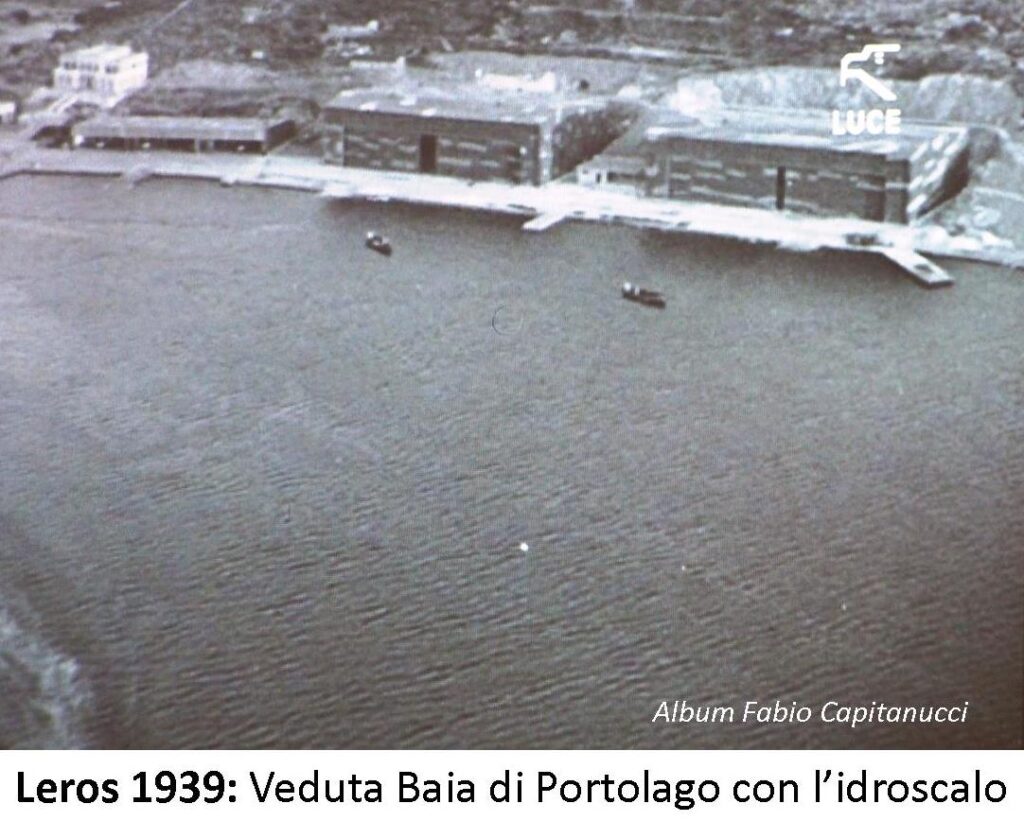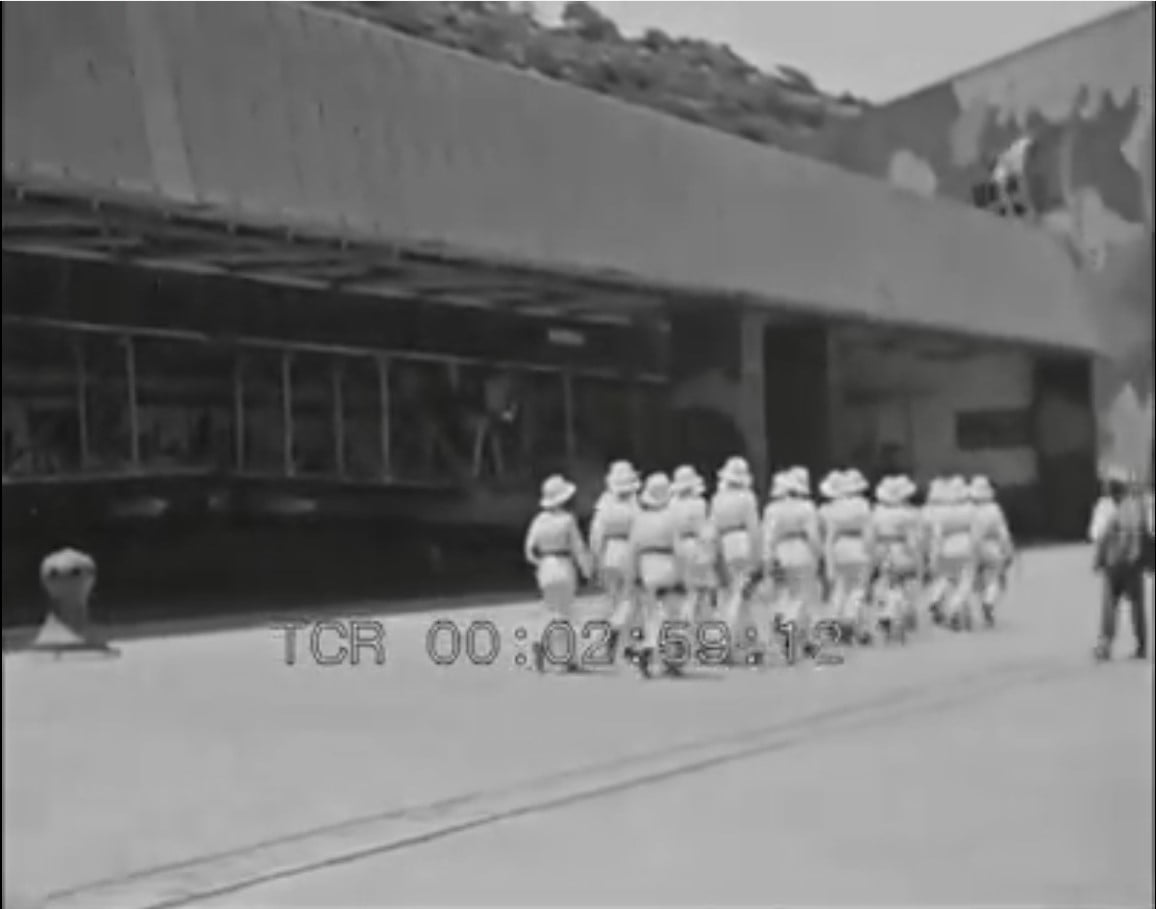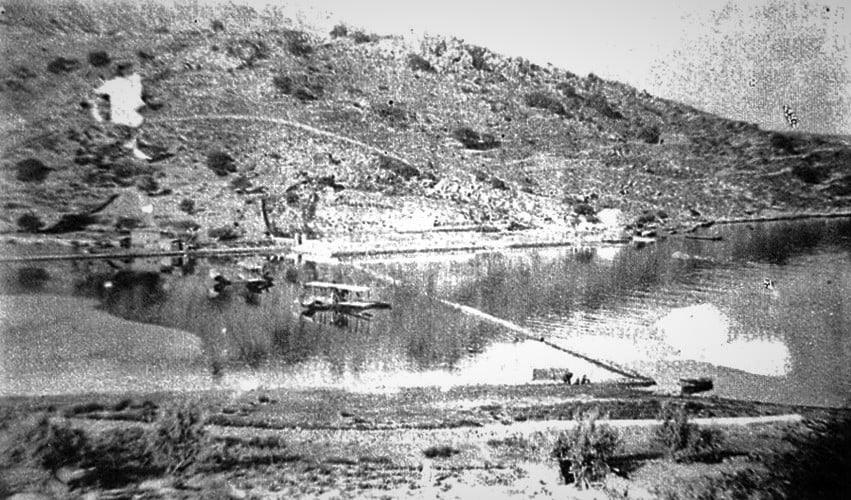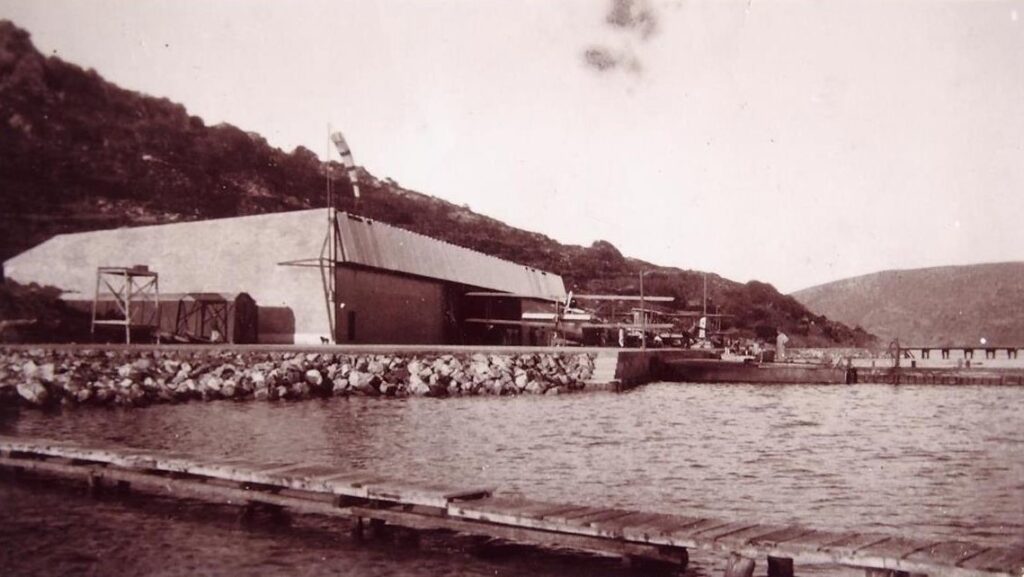CONSTRUCTION OF THE AIR BASE
Among the Aegean islands, the most strategic role in the evolution of Italian architecture in Dodecanese played by the island of Leros. This happened because of its geographical location in the Mediterranean Sea and because of its particular morphology. These are the main reasons why Italian Forces chose Leros to host their main naval base of the Italian Navy during ’30s and WW2.
Of the five main bays of the island, that of Lakki considered to be the largest natural harbor in the east Mediterranean, feature that has already led to its exploitation since 1916 by the British Navy, for its needs. Moreover, according to the ANNUARIO AMMINISTRATIVO E STATISTICO- ERM. ARMAO, the establishment of an English naval base is reported. In the years that follow, British recognition of Italian sovereignty led to the exclusive use of the base by Italians, who extended gradually the facilities to what considered to be the largest Eastern Mediterranean military base, after Malta.
Italy’s purpose was purely strategic: the fortification of Leros and the creation of a large military base, in order for the Italians to control an area which was very vital to all great powers of Europe


The Base, according to the plan, would have facilities for Navy, Air Force and Army, as well as production workshops for military equipment. The following years, areas of Lepida and Aghios Georgios were chosen for the installation of the Base, due to advantages related to the geomorphology of the bay, which ensured protection at the Base both from the sea and from the air, that would be achieved by the installation of a large number of anti-aircraft guns at strategic points.
The area has been used since 1923 for deposition of various materials. In May, the first works begun.
The local newspaper “Foni tis Dodecanisou” (Voice of Dodecanese) wrote on its paper of July 16th, 1923:
“Get ready to fly! We have been informed that in Leros, and more accurate in Lakki, close to Lepida area, where the villa of Tsigada Pasha was, an Italian Air Base is about to get installed. On one hand, this Base will be for military purposes. On the other hand, this Air Base will be also used for international transportation purposes. Also, in the harbor of Lakki , Italian fleet will harbor its ships.

And on September 1st, 1923, the same newspaper published another article about the Air Base:
“At Lakki, not only an air base and related workshops will be installed, but also all the vital preparations will be made in order to establish a building complex for the needs of the Base. Three (3) transport ships, 3.000 tons each, transported to this area various military supplies, twelve (12) sea planes, cement, etc. Moreover, some 100 Italian officers and 300 soldiers and technicians of the Corps of Engineers were disembarked also at the area. Private houses were commandeered, in order to house all these troops.”
The posts of this newspaper continue to describe the progress of the world.
On the paper of October 16th, 1923, titled “Leros, The new Italian Naval Base”, we read:
“The island turned to be an Italian naval and air base. Since May , Italians have already established an air station to the area. The months that follow, Italians transported all kind of military supplies to the area, in order to support the operation of the Base. One day prior to the capture of Corfu Island by Italian troops ( August 31st, 1923), twenty-two (22) heavy destroyer ships of the Italian Navy anchored in Lakki harbor”
And it continues:
“At Lakki Bay, on the left as we enter, at point Cazzuni, Italians installed heavy naval guns, as well as Paleokastro and also in the medieval fortress. In the harbor of Lakki, Italians anchored forty (40) buoys and unloaded more than 25.000 tons of carbon , close to Aghios Georgios area. (…) Also, hangars for the seaplanes are been constructed….“
From 1927 until 1932 expropriations were made, which provided the needed space for the installation of the military Base. In October 1932, the Italian commander of the Dodecanese Mario Lago visited the area, in order to inspect the progress of the works, accompanied by the architect Florestano di Fausto, who had already designed residences for officers.
For the installation of the Air Base for Italian Air Force (Regia Aeronautica), the area of Lepida was suitably formed. In the SW section of the area, military and technical facilities were installed. These facilities included an auxiliary and two main hangars for seaplanes , repair workshops of private Italians companies, two steel cranes to lift the seaplanes, as well as special protection departments of the Army with auxiliary military services and warehouses for food supplies, spare parts and materials.
The two (2) two main hangars were made out of steel and aluminum. The total surface of each shed was 7.500 sq.m. The netting bars were assembled as a grid, with glazing all around, close to the top of the sides. The outer side, was painted in camo colors, for the protection and the cover of the Base. Also, the natural rocks just behind the structures were also used as part of the camo.
At the same time period, the HQ building of the Base (Regio Aeroporto) and the three-store barracks for accommodation of aviators (Caserma Avieri) (4628 sq.m.) were installed. In addition, area’s unique building from Ottoman Period, Tsigada Pasha’s villa (499 sq.m.) was modified to be used as a Club for Seaplanes Base Officers


WAR TIME ACTIVITY OF THE AIR BASE
During mid – war and early WW2, mostly the units below were stationing and operating , in Regio Aeroporto ” Gianni Rossetti” (Royal Airport “Gianni Rossetti”).
- 185 Squadriglia / 84° Gruppo Ricognizione Marittima (185th Squadron of 84th Maritime Reconnaissance Group)
It arrived in Leros on October 1st, 1937 and consisted by six (6) CANT Z.501 Gabbiano seaplanes
- 147 Squadriglia / 84° Gruppo Ricognizione Marittima (147th Squadron of 84th Maritime Reconnaissance Group)
Consisted by six (6) CANT Z.501 Gabbiano seaplanes
- 161 Squadriglia Autonoma Caccia Marittima (161st Independent Fighter Squadron)
Consisted by two (2) IMAM Ro.43 reconnaissance single float seaplanes and seven (7) IMAM Ro.44 fighter seaplanes
- 92 Gruppo bombardamento marittimo (92nd Maritime bombing group)
The group transferred from Orazio Pierozzi Airport (Brindisi) to Leros on May 28th, 1932
- V Stormo misto Egeo (5th Aegean Mixed Flock)
It formed on June 15th, 1932 and was stationed in Leros.
The majority of the seaplanes that stationed in Leros, during WW2, were old-type planes, that faced many failures and had very few potentials. That is the reason why the majority of them were used and operated for search and rescue missions and for reconnaissance.
POST WAR – THE FATE OF THE HANGARS
In the post-war period, during mid 50’s, the two half – damaged main hangars of Leros’ Air Base were transported dismantled to mainland Greece, one of which was re-assembled in Air Base of Dekelia and the other in the Air Base of Elefsina.
The works were carried out at that time under the self-supervision of the EBA (Hellenic Royal Airforce) Construction Squadron (SKEVA), the forerunner of MAK (Aircraft Construction Squadron) and 206 PAH (206 Aviation Infrastructure Wing).
The extreme danger of assembling the pairs of semiconductors at a great height was the reason why Citation for excellent services was awarded to the aircraftsmen “aerialists”, in 1949, who were promoted to the rank of Airman First Class.
The shed of 356 MTM (356 Tactical Transport Squadron) as well as the so-called shed “Leros”, where the Museum of the Hellenic Air Force is housed today, are memorable monuments of aircraft construction technology with special historical and architectural interest.
Further reading:






